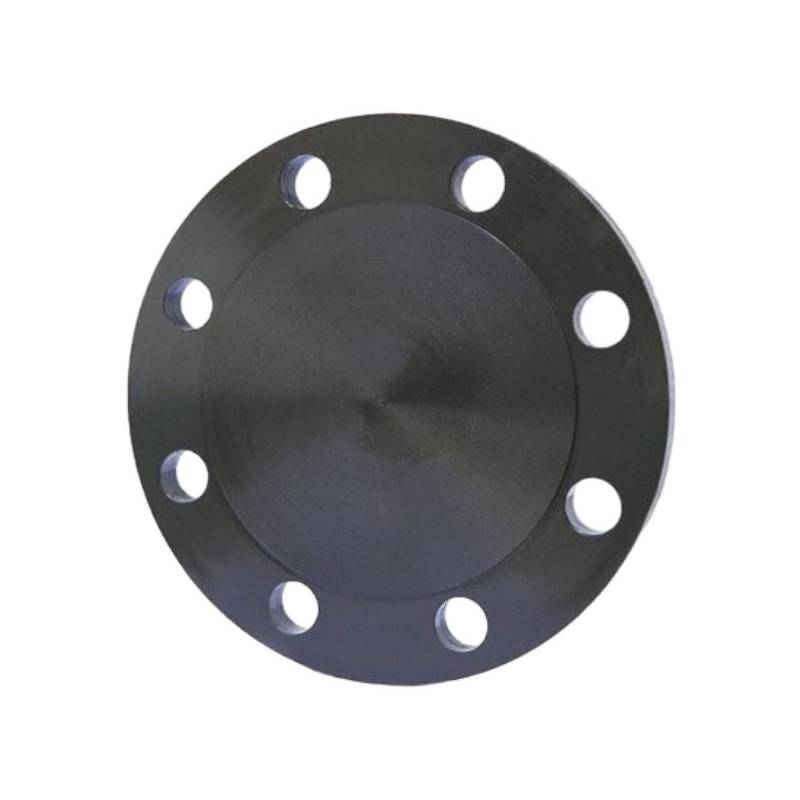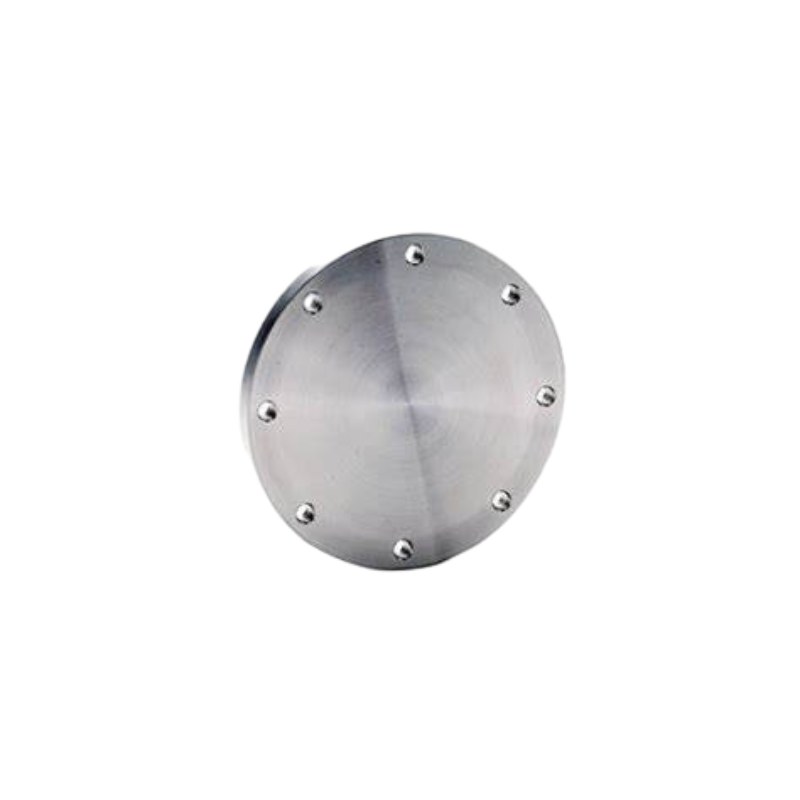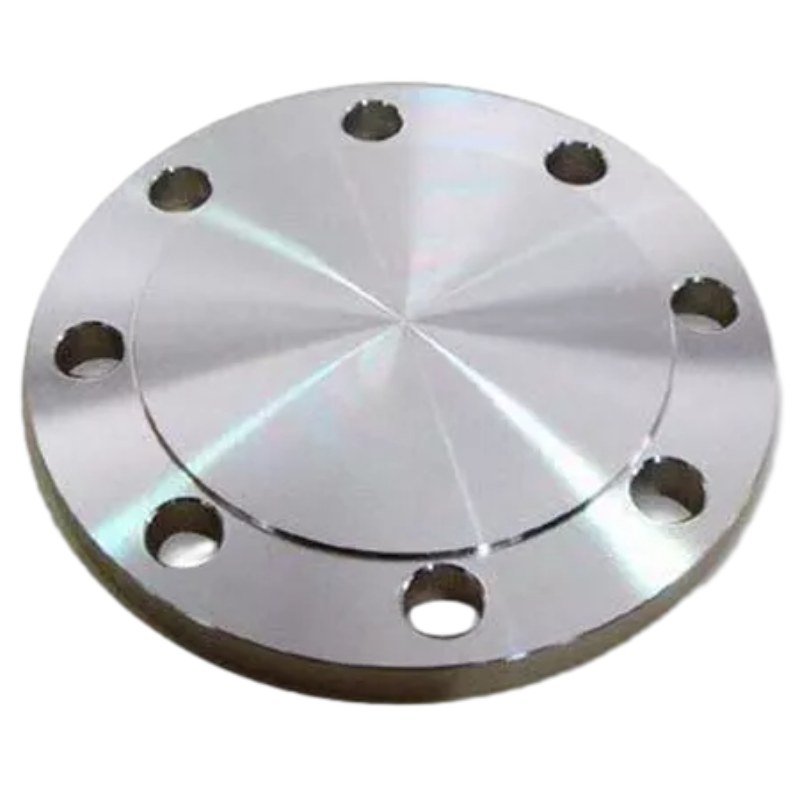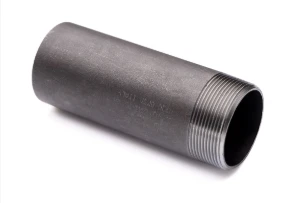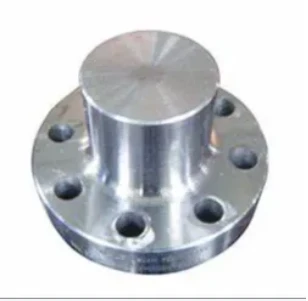-
Idizayini Eqinile: I-GOST 12836-67 Blind Flange ifaka ipuleti eliyisicaba, eliyindilinga elinezimbobo zamabholithi ezihlukaniswe ngokulinganayo ezizungeze umjikelezo. Lo mklamo uvumela ukuqondanisa nokubopha kalula ku-flange yokukhwelana, okuhlinzeka ngesixazululo esiqinile nesiqinile sokuvala samasistimu amapayipi.
-
Ukuvalwa Okuvikelekile: Uma ifakwe ekupheleni kwepayipi, ubuso obuyisicaba be-GOST 12836-67 Blind Flange budala uphawu oluqinile, ukuvimbela ukuvuza kwamanzi nokugcina ubuqotho besistimu yamapayipi. Leli khono lokuvala elivikelekile liqinisekisa ukusebenza kahle nokuphepha, ngisho nangaphansi kwezimo zokusebenza ezinzima.
-
Uhlelo lokusebenza oluhlukahlukene: Kusuka ezindaweni ezihluza uwoyela negesi kuya ezimbonini zokucubungula amakhemikhali namanethiwekhi okusabalalisa amanzi, i-GOST 12836-67 Blind Flanges ithola ukusetshenziswa okuhlukahlukene kuzo zonke izimboni ezihlukahlukene. Kungakhathaliseki ukuthi isetshenziselwa izinjongo zokuzihlukanisa, ukuhlola ingcindezi, noma ukuvalwa kwesikhashana, lawa ma-flange anikeza ukwethembeka nokuqina kumasistimu amapayipi abalulekile.
-
Ukwakhiwa Okuqinile: Yakhiwe ngezinto zekhwalithi ephezulu njenge-carbon steel, insimbi engagqwali, noma i-alloy steel, i-GOST 12836-67 Blind Flanges ibonisa amandla akhethekile nokuqina. Akhiwe ngendlela yokuthi amelane nezimo zokusebenza ezinzima, okuhlanganisa izindawo ezonakalisayo, izinga lokushisa eliphezulu, nokucindezela okukhulu, okuqinisekisa ukusebenza kwesikhathi eside nokwethembeka.
-
Ubunjiniyela bokunemba: I-GOST 12836-67 Blind Flanges ibhekana nezinqubo zokunemba zemishini nezobunjiniyela ukuze zihlangabezane nokubekezelelana okuqinile kwe-dimensional kanye nezidingo zokuqedwa kwendawo. Lokhu kunemba kuqinisekisa ukuhambisana nokushintshana namanye ama-flange ajwayelekile, okusiza ukuhlanganiswa okungenamthungo ezinhlelweni zamapayipi kanye nokunciphisa ubungozi bokuvuza noma ukwehluleka.
-
Ukufaka kalula: Ukufaka i-GOST 12836-67 Blind Flanges iyasebenza futhi iqondile, idinga ukuqondanisa okulula nokubopha ekugcineni kwepayipi. Ubukhulu bawo obujwayelekile kanye nokwakheka kwenza kube lula ukuhlanganiswa kwamanethiwekhi amapayipi akhona, kunciphisa isikhathi sokufakwa kanye nezindleko zomsebenzi.
Izici Eziyinhloko:
- Idizayini eqinile yokuvalwa okuvikelekile
- Ukuvalwa okuvikelekile ngomklamo wobuso obuyisicaba
- Uhlelo lokusebenza oluhlukahlukene kuzo zonke izimboni
- Ukwakhiwa okuhlala isikhathi eside kokusebenza kwesikhathi eside
- Ubunjiniyela obunembayo bokubekezelelana okuqinile
- Ukufakwa kalula ngokuqondanisa okulula nokufaka ibhawudi
Material Selection for GOST 12836-67 Blind Flanges: What You Need to Know
When it comes to GOST 12836-67 blind flanges, selecting the appropriate material is crucial for ensuring functionality, safety, and longevity in various applications. GOST standards, established by the Euro-Asian Council for Standardization, Metrology and Certification, guide the specification of materials to maintain the integrity of piping systems.
Key Considerations for Material Selection:
1. Corrosion Resistance: One of the primary factors in choosing a material for GOST blind flanges is its ability to resist corrosion. Stainless steel (such as 304, and 316) is a popular choice due to its excellent resistance to oxidizing environments. For applications involving aggressive chemicals, alloys like Inconel or Monel are often considered.
2. Pressure and Temperature Rating: GOST blind flanges need to be rated for the specific pressure and temperature conditions they will face. Material selection must align with the service conditions to avoid failure. For high-pressure applications, carbon steel flanges can be suitable, provided they are properly treated or coated.
3. Weldability and Machinability: Depending on installation requirements, the selected material should offer appropriate weldability and machinability. If modifications or on-site fabrication are necessary, choosing materials that can be easily welded is essential.
4. Standards Compliance: Ensure that the materials selected comply with all relevant GOST standards. This not only guarantees quality but also maintains compatibility within the piping system.
5. Cost-effectiveness: While material selection should prioritize performance and safety, cost considerations also play a significant role, especially in large-scale projects. Finding a balance between budget and quality is essential.
Differences Between GOST 12836-67 Blind Flange and Other Flange Standards
When comparing the GOST 12836-67 blind flange with other flange standards, several key differences emerge that reflect the unique characteristics and applications of the Russian standard. The GOST (Gosudarstvennyy Standart) system is a set of regulations and guidelines that govern various industrial products, including blind flanges, which are used to seal off piping systems.
One of the primary differences lies in the dimension and pressure rating classifications. GOST 12836-67 blind flanges are specifically designed according to Russian specifications, with dimensions that may differ significantly from those outlined in ANSI, ASME, or ISO standards. For instance, while ANSI/ASME flanges are typically categorized into nominal pipe sizes (NPS) and pressure classes, GOST flanges feature a unique set of sizes and pressure ratings, making it essential for engineers to select the appropriate type based on regional standards.
Another notable difference is the material composition. The GOST standard emphasizes the use of specific materials that are suited for the harsh Russian climate and industrial requirements. While common materials such as carbon steel and stainless steel are also used in other standards, GOST may specify additional material grades to accommodate unique environmental challenges, including extreme temperatures and corrosive conditions.
Additionally, the manufacturing and testing processes for GOST 12836-67 blind flanges are subject to local industry regulations, which might include stricter quality assurance protocols compared to other international standards. This ensures that the flanges not only meet dimensional specifications but also effectively withstand the pressures and temperatures expected in typical applications within Russia.
In summary, while GOST 12836-67 blind flanges share similarities with other flange standards, their unique dimensions, material requirements, and quality assurance processes set them apart. Understanding these differences is crucial for engineers and designers when selecting flanges for specific applications in diverse geographical locations.








